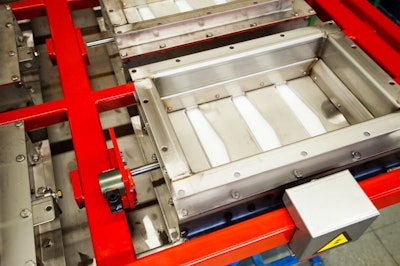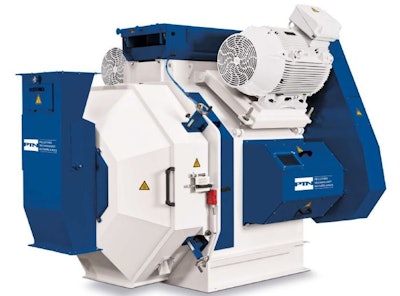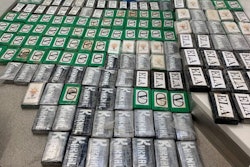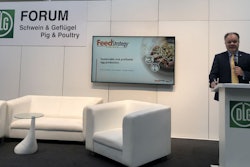
New technologies focus on automation, traceability, sensors and energy savings
The latest generation of new innovations in feed mill technology centers around automation, traceability, sensors and energy savings, according to some experts in the industry.
Labor shortages, regulatory requirements and the need to increase productivity are among the reasons automation has become more necessary in feed mills, said Martijn van Eijk, area sales manager – North America at Dutch equipment manufacturer KSE Process Technology.
“The requirements and regulations set to animal nutrition are rapidly increasing and formulations are becoming more complicated. The industry bar is set higher when it comes to … tracing of ingredients and proportioning and ingredient quality. All often require significant changes to one’s production process. Additionally, there is an increasing shortage of qualified staff and a need to produce higher volumes, which requires a higher level of automation within the plant,” van Eijk said. “We also see an increasing need of lowering operational costs in terms of labor, system failures, energy consumption and creating a safe and clean working environment due to an increase of corporate social responsibility.”
Increasing importance of automation
Van Eijk believes plant automation will become increasingly more important in the next few years, with a focus on smart automation and flexible equipment to meet modern-day requirements.
“Equipment that features dosing slides instead of the traditional dosing screws. Single equipment that can operate on a large dosing range and require less operators. Plant automation that is exclusively designed for the animal nutrition industry,” van Eijk said. “The reason behind this is that specialists in automating this specific industry have better insights in understanding the needs of the manufacturers of animal nutrition. Increasing attention for food safety and therefore all technology that truly contributes to this.”
Consolidation in the animal feed industry, particularly in Europe, also increases the need for more automation, he said.
“In Europe, we have seen a consolidation wave, where smaller feed mills have merged into a bigger plant with a higher volume. With their high level of plant automation, these plants run on an average of 250,000 metric tons yearly, with just a handful of operators. These new plants with higher capacities justify investments in automation, delivering high-quality products to the market and are companies where staff enjoys working thanks to the fact that their employer invests in a safe and healthy working environment. This is global trend within our industry.”
Among KSE’s new innovations are dosing and weighing products that save on energy consumption and labor. The ALFRA dosing slide is a tool to dose product out of silos and is mounted underneath a silo and doses product out of the silo and into a weighing system.
 Courtesy KSE Process Technology
Courtesy KSE Process Technology“Thanks to the up-and-down movement of the dosing slide, it activates the product in the silo before it doses the product into the weighing hopper underneath. Dosing slides are driven by one hydraulic unit instead of a motor, therefore saving on energy consumption,” van Eijk said, adding that several types of the company’s dosing and weighing equipment feature the weigher-in-weigher concept.
“With two weighing scales in one hopper, we make full use of our dosing slide concept. By dosing large quantities directly into the larger weigher – with smaller quantities first going into the smaller weigher – a high throughput can be combined with excellent accuracy. This also eliminates the need of multiple weighing systems because of its wide dosing range,” he said.
KSE’s ALFRA box dosing system is a scalable platform that is designed to completely automate the preparation of micro ingredients for animal feed production in boxes. Instead of dosing into a weighing hopper, all micro-ingredients are dosed into a small box. After these ingredients are collected, this box is discharged into a mixer.
“In most production environments, these steps are still done by hand, making this process both difficult to control and prone to product contamination and human errors. Also, the manual addition process often involves health and safety risks for employees,” van Eijk said.
Sensors and automation to maximize value
Digital solutions, such as sensor and automation systems, maximize value for feed mills over time, according to Roman Grundler, senior product manager for digitalization and plant automation at Bühler AG.
“The latest digital solutions we’ve introduced to the market start with essential dashboards to maximize operational transparency and allow for informed decision making,” he said. “They continue with predictive maintenance and a complete new consulting experience, combining expert knowledge with data analytics.”
Availability of production and sensor data can help feed mills be more productive and efficient.
“With this advantage, feed producers can optimize plant efficiency and decrease operating expenses,” he said. “At the same time, experienced employees are hard to find. Data analytics and digital tools will help feed millers to be much faster and more efficient in optimizing processes and finding root causes for efficiency losses.”
Grundler also said traceability and feed safety will be key drivers to feed technology trends in the next five to 10 years, as well as autonomous production and smart factories.
“Technologies like blockchain can contribute to make feed production more transparent along the whole value chain. Energy efficiency, product quality and CO2 emissions will have to be reported. This is definitely a topic to watch and be prepared,” he said.
Bühler’s new PelletingPro smart pellet moisture control technology utilizes sensor and automation systems in combination with cloud data availability, Grundler said.
 Courtesy Bühler
Courtesy Bühler“The smart pellet moisture control PelletingPro finally allows feed millers to operate pelleting lines at very stable process conditions and with maximum efficiency and reliability,” he said. “This has a huge effect on yield, pelleting throughput and specific energy consumption. Customers are excited that the process now depends less on highly skilled operators and that the efficient operation is further automated.”
PelletingPro “solves a general industry pain,” Grundler added, by accurately controlling the final pellet moisture after the cooler to ensure product quality and to benefit from constant process conditions.
Energy savings ‘is a must’
According to Willem de Vaan, managing director at Pelleting Technology Netherlands BV (PTN), energy is the No. 1 challenge that his customers are looking to address with equipment investments.
“Energy saving is a must for everybody due to the rise of energy costs as a result of geopolitics and as a duty to operate in a sustainable way and to think about our climate,” he said, adding that he expects to see an increase in applications that will contribute to energy savings in the next few years.
By using online features and solutions that measure and collect data, feed mill operations can be made more efficient with predictive maintenance.
“Feed mill owners will need more intelligence to measure what is happening in their mill and how they can control the operation making use of data collection,” de Vaan said. “By this, they are able to monitor the health position and performance of their mill. This will enable them to control the cost of operation and allow predictive maintenance.”
PTN’s new MonoRoll pellet press, a single-roll pellet press, can help feed mills achieve significant energy savings and deliver higher output. It is unique in its design and concept, as no other pellet press manufacturer has a single-roll machine, de Vaan said.
 Courtesy PTN
Courtesy PTNFeed Mill of the Future digital supplement
WATT’s feed brands Feed Strategy and Feed & Grain magazines join forces to launch the monthly Feed Mill of the Future digital supplement. Each edition aims to provide animal feed industry stakeholders with forward-looking content, market insights and a spotlight on the leading-edge technologies shaping the global feed industry of tomorrow.
Subscribe today! https://bit.ly/3dWzow7











